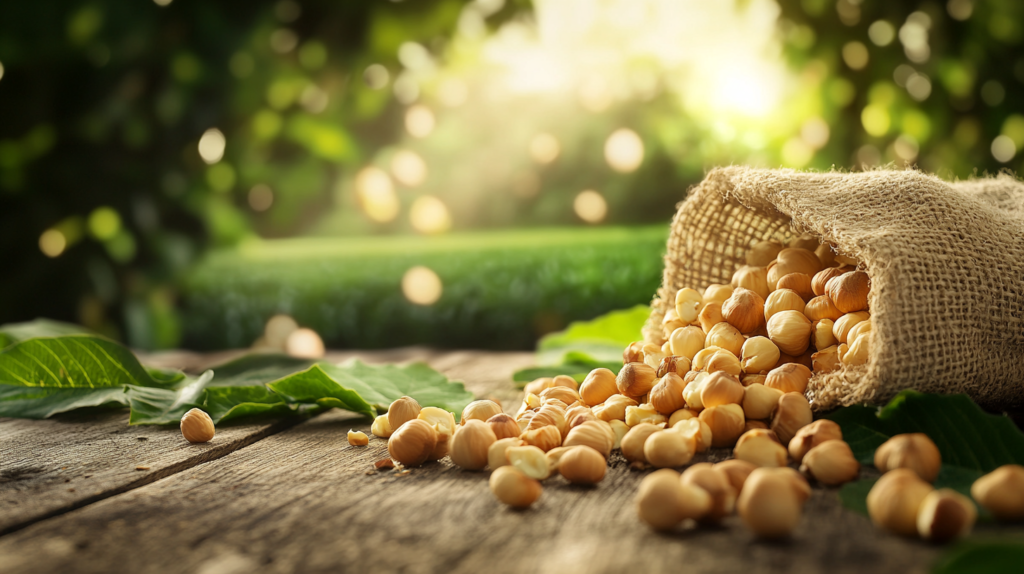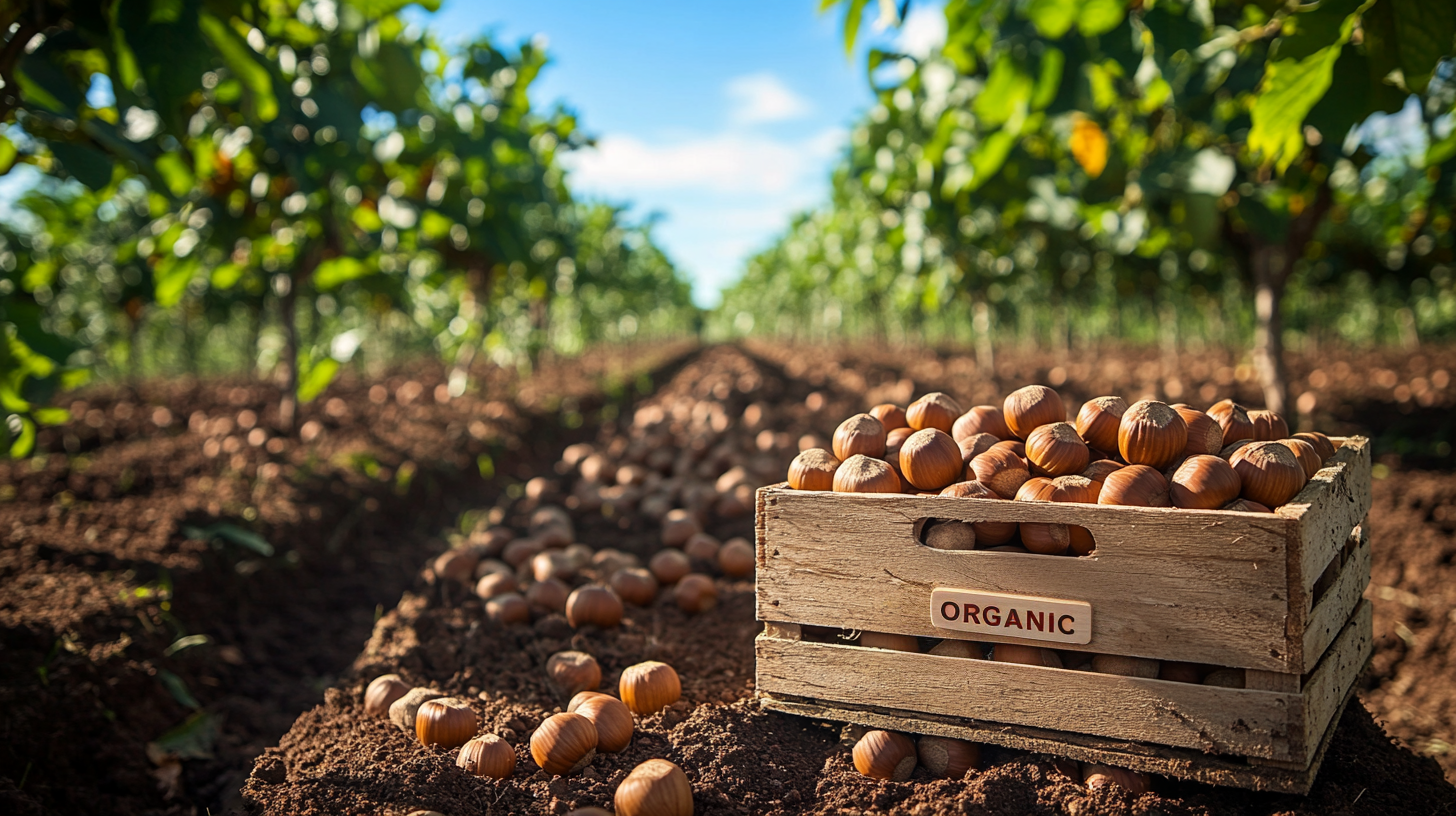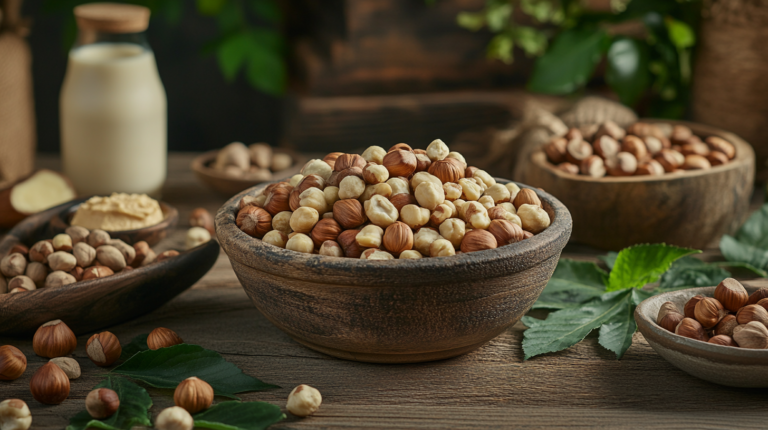The Future of Organic Hazelnut Farming in the Market
Organic hazelnut farming is poised for significant growth and transformation in the coming years, driven by increasing consumer demand for healthier, sustainably produced foods and the expanding applications of hazelnuts in various industries. This comprehensive analysis explores the current state of the organic hazelnut market, emerging trends, challenges, and opportunities that will shape its future.
Market Overview and Growth Projections
The global hazelnut market has been experiencing robust growth, with organic hazelnuts playing an increasingly important role. The overall hazelnut market size was estimated at USD 8.65 billion in 2023 and is projected to grow at a compound annual growth rate (CAGR) of 8.9% from 2024 to 20301. This growth is expected to continue, with the market reaching $21.23 billion by 20282.
Within this expanding market, organic hazelnuts are gaining significant traction. Consumers are increasingly willing to pay premium prices for organic hazelnuts, driven by concerns over diet quality and environmental impact. Studies indicate that consumers perceive organic hazelnuts as healthier and tastier, enhancing their appeal in the marketplace1.
Drivers of Organic Hazelnut Demand
Several factors are contributing to the rising demand for organic hazelnuts:
- Health Consciousness: As awareness of the health benefits associated with organic foods grows, consumers are increasingly seeking out organic hazelnuts. These nuts are rich in healthy fats, protein, vitamins, and antioxidants, making them an attractive option for health-focused individuals12.
- Plant-Based Diets: The rising interest in plant-based diets has fueled demand for organic hazelnuts, as they are integral to various vegan and dairy-alternative products, such as hazelnut milk and spreads1. This trend aligns with the increasing popularity of nut-based products among health-conscious consumers seeking nutritious snack options.
- Sustainability Concerns: Environmentally conscious consumers are driving demand for sustainably sourced and organic hazelnuts. This shift is encouraging conventional hazelnut farmers to transition to organic farming practices, positively affecting environmental sustainability and consumer satisfaction1.
- Gourmet Food Trends: The rise of gourmet food trends has contributed to increased demand for whole hazelnuts, particularly in premium chocolate products, nut butter, and specialty spreads1.

Emerging Markets and Geographical Expansion
While traditional hazelnut-producing countries like Turkey and Italy continue to dominate the market, new regions are emerging as significant players in organic hazelnut production:
- Asia Pacific: The hazelnut market in Asia Pacific is expected to grow at a CAGR of 9.3% from 2024 to 2030, driven by increasing awareness of the health benefits of hazelnuts in rapidly developing countries like China, India, and Indonesia1.
- New Cultivation Areas: To meet rising demand and mitigate risks associated with climate change, the industry is exploring new cultivation regions with suitable climates for hazelnut production3.
Innovations and Product Diversification
The organic hazelnut industry is witnessing significant innovations and product diversification:
- Value-Added Products: Manufacturers are developing a wide range of value-added organic hazelnut products, including oils, flours, and milk alternatives, to cater to diverse consumer preferences and increase market value3.
- Non-Food Applications: Emerging uses of organic hazelnuts in cosmetics, pharmaceuticals, and dietary supplements are expanding market opportunities3.
- Hazelnut-Based Beverages: Innovations in hazelnut-based beverages are expected to drive market growth in the coming years2.
Challenges Facing Organic Hazelnut Farming
Despite the promising outlook, organic hazelnut farming faces several challenges:
- Climate Change: Unpredictable weather patterns, including extreme temperatures and heavy rainfall, can adversely affect hazelnut yields and quality. These climatic shifts disrupt traditional growing seasons and increase the risk of crop diseases and pest infestations1.
- Pest and Disease Management: Organic farmers must contend with threats such as Eastern Filbert Blight and the hazelnut weevil without the use of synthetic pesticides. Implementing effective integrated pest management (IPM) strategies is crucial for organic hazelnut cultivation3.
- Transition Costs: Conventional farmers looking to transition to organic practices may face significant costs and technical challenges. Access to resources and education plays a crucial role in this transition1.
- Market Price Fluctuations: The organic hazelnut market is subject to price volatility, which can impact farmers’ profitability and long-term sustainability3.
Opportunities for Growth and Innovation
Despite these challenges, the organic hazelnut industry presents numerous opportunities for growth and innovation:
- Sustainable Farming Practices: The adoption of sustainable and organic farming practices is becoming increasingly important. Farmers who implement these practices can benefit from premium pricing and increased market access3.
- Certification Programs: Expanding certification programs for organic, fair trade, and sustainable hazelnuts will meet consumer demand and improve market access for producers3.
- Intercropping: Integrating organic hazelnut cultivation with other crops can optimize land use and increase farm income, providing additional revenue streams for farmers3.
- Breeding and Genetics: Ongoing research in breeding disease-resistant varieties and improving yield through genetic research will support market growth and help address some of the challenges faced by organic farmers3.
- E-commerce Expansion: The growth of e-commerce and online grocery shopping presents new opportunities for organic hazelnut producers to reach consumers directly2.
Future Outlook
The future of organic hazelnut farming in the market looks promising, with several key areas of focus:
Sustainability Initiatives: Promoting and adopting sustainable practices across the supply chain will enhance the industry’s environmental footprint and meet growing consumer demand for responsibly produced foods3.
- Technology Integration: Incorporating advanced technologies in organic farming practices, such as precision agriculture and data analytics, can help improve yields and quality while maintaining organic standards.
- Consumer Education: Increasing consumer awareness about the health benefits and environmental impact of organic hazelnuts will be crucial in driving continued market growth.
- Product Innovation: Continued investment in research and development to create innovative organic hazelnut-based products will help drive market expansion and cater to evolving consumer preferences.
- Global Market Expansion: As demand for organic hazelnuts grows worldwide, producers will need to focus on expanding their reach into new markets, particularly in Asia and other emerging economies.
Conclusion
The future of organic hazelnut farming in the market is bright, driven by increasing consumer demand for healthy, sustainable food options and the versatility of hazelnuts in various applications. While challenges such as climate change and pest management persist, the industry is well-positioned to overcome these obstacles through innovation, sustainable practices, and strategic market expansion.
As the global hazelnut market continues to grow, organic producers have a unique opportunity to capture a significant share of this expanding market. By focusing on sustainability, quality, and innovation, organic hazelnut farmers can play a crucial role in shaping the future of the industry and meeting the evolving needs of consumers worldwide.
The coming years will likely see continued growth in organic hazelnut production, with new regions entering the market and established producers expanding their organic offerings. This growth will be supported by ongoing research into disease-resistant varieties, improved farming techniques, and the development of new, value-added organic hazelnut products.
Ultimately, the success of organic hazelnut farming will depend on the industry’s ability to adapt to changing environmental conditions, meet stringent organic standards, and effectively communicate the value of organic hazelnuts to consumers. With the right strategies in place, organic hazelnut farming is poised to become an increasingly important and profitable sector within the global nut industry.
Sources:
[1] https://www.grandviewresearch.com/industry-analysis/hazelnut-market-report
[2] https://www.thebusinessresearchcompany.com/report/hazelnut-global-market-report
[3] https://hazelnuthub.com/trends-and-opportunities-in-the-hazelnut-industry/
[4] https://www.cardassilaris.com/news/2024/2025-hazelnut-production-forecast-impact-on-global-market-prices
[5] https://www.agbi.com/agriculture/2024/08/turkeys-hazelnut-growers-climate-fears/
[6] https://nationalnutgrower.com/news/u-s-hazelnut-production-grows-despite-global-pressures-and-market-shifts/
[7] https://www.ferrero.com/int/sites/ferrero_int/files/2024-06/20240527-hazelnut-charter.pdf






